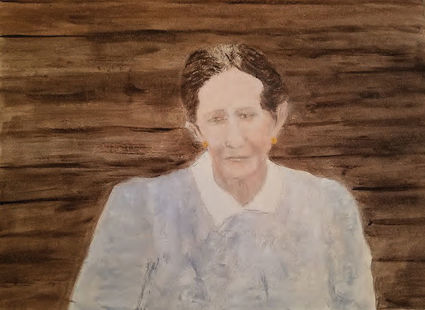JOSEPHINE DOODY – THE CHEMICAL ENGINEER OF GLACIER NATIONAL PARK
January 22, 2020
Robin Hood is a legend; though people have repeated and invented tales of his exploits for centuries, there is no proof that the man existed.
Josephine Doody is not a legend; though her original surname is unknown, her existence and death are documented, and her principal researcher has some confidence, not 100%, that he located her birth certificate.
In 1988 John Fraley discovered her cabin, decaying in Glacier National Park, researched her as best he could, and distilled from his investigations a book, Wild River Pioneers: Adventures in the Middle Fork of the Flathead, Great Bear Wilderness and Glacier National Park, that treats her life and death. Her adventures and achievements are the material of which legend is made, but still, and there is much of stills about her, her career may be sketched with some confidence.
The best evidence is that she hailed from Macon County, Georgia in 1853 and by unknown paths came to be in Colorado around 1890. At that time she was accused of shooting a man to death but claimed self-defense against attempted rape. (Remember the song, "He Had it Comin'" in the musical/movie, "Chicago?")
Clearly, she lacked faith in the system of justice or in the credibility of her explanation, for, while awaiting trial, she fled to McCarthyville, Montana, a town in the Marias Pass along the Great Northern Railroad, a focus of last week's article. There she worked as a dance-hall girl, at the job description for which one can only guess, and managed to acquire an opium habit.
Dan Doody was a man with a homestead plot and a cabin on the Flathead River, which holdings would become part of Glacier National Park. He had no craving for opium, but he had one for Josephine, so he cured her via the expedient of kidnapping. He roped her to a donkey, carried her off to that cabin, and kept her locked up until she had kicked the habit. In exchange for this second rape he married her and gave her the name by which she is known.
A fact in the lore of Josephine Doody is her unique earrings, a pair of gold nuggets that, in time, elongated her ears to the extent that some said they looked like bananas.
A fascinating question is where and how Josephine learned the art and science of distilling ethanol, but she became, like Bertie Brown in our former article, a successful bootlegger, though not so affluent. Just across the river from the Doody cabin was a siding of the Great Northern Railroad. Whether it was built as a convenience to Josephine's trade and railroad personnel is unknown, but her place may have been the world's first drive-through liquor store.
After stopping, the train engineer gave his whistle some number of toots, and Josephine loaded their small boat with exactly that number of units – some say quarts, others, gallons – of firewater and rowed across to deliver the merchandise. Thus, not entirely drive-through, but that was the scenario when the river was not frozen. Neither is the Flathead lazy in that stretch, so we must hope the lady set a price to compensate her adequately for the work and for the danger.
Living in and, we may say, off land surrounded by a national park, it is not surprising that Dan was among the first hired as a ranger. His was not a long association, however, for in 1916 he was fired, not for poaching, but for excessive poaching. What with Mrs. Doody's manufacturing enterprise and likely Dan's continued, standard poaching, they survived this setback.
According to one source, Dan passed away in 1919, 1921 in another, but his widow remained in her forest sanctuary and maintained it as a lodge for hunting and fishing. It lay at the intersection of two main Park trails, which suggests that her commerce was not restricted to railroad personnel, and the son of a ranger in the 1929 – 30 period recalled her friendships with other Park employees. He visited her with his father on Thanksgiving, 1930, and remembered the many cats she kept.
Many years later that young, Thanksgiving visitor mentioned that not long after that day she abandoned her cabin and moved across the river on Deer Lick Creek.
There she is said to have taken up residence with a man named Charlie Holland, who, when she grew seriously ill, sent her by train to Kalispell. She resisted that journey, and he did not see fit to accompany her. It may seem that she spent a good part of her life going places against her will, but Holland, at least, did not tie her to the locomotive.
Once hospitalized she lost consciousness and died on the next day in January, 1936. Somewhere along the somber route, illness, train, hospital, and death the famous earrings, her sole possessions of value, vanished. Holland was suspected of having abstracted them and he did not see fit to attend her funeral, although two park rangers, possibly customers, did.
Though she was reported to have been interred adjacent to Dan Doody in Kalispell's Conrad Cemetery, the proper folks of the town refused her a marker to certify her presence. Author Fraley remedied that lack and in 2009 arranged a facsimile of a funeral and awarded her a tombstone on the assumed grave.
Charlie Holland lost the Doody homestead to a gambling debt, and there was a series of owners through the years. In 2012 the land and cabin finally passed into Park ownership.
Both the nugget jewelry and its effect on her ears are visible in this painting. What else may be read in that face: regret?; resignation?; fatigue?; sorrow?; want?; loneliness?; possibly quiet defiance?







Reader Comments(0)